A dark wooden chair, a red case and a faded cigar help to tell the story of a crucial time for Great Britain and the free world in 1944.
However, the smell too of the Churchill’s War Room under Whitehall in London.
And how do I know of the smell?
Well, I was given a very special chance to not only see the set of rooms used by the great man as half a million do every year. But also privileged to go behind the glass that seals these rooms as a preserved time capsule that has been kept exactly as they were on the day Japan surrendered in 1945.
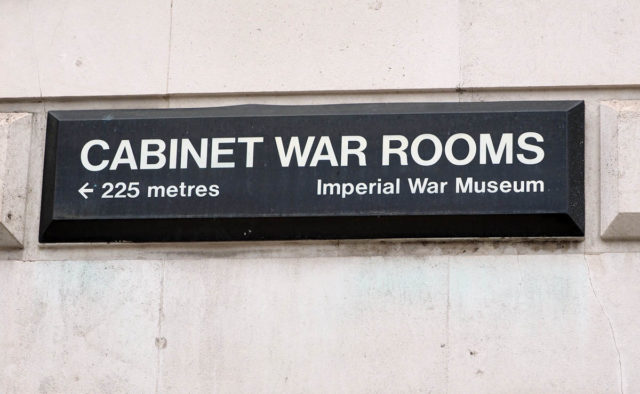
Photo Credit
The Cabinet War Rooms are several rooms including a military command centre, the bedroom of Winston Churchill and the main meeting room plus even the tiny room used to communicate with the president of the USA.
The hotline room that looked more like a toilet from outside held a secret that Churchill and Roosevelt could speak on a direct secure line at crucial times during the war. Although the technology needed at the time to achieve this took up several secret rooms of electronics housed elsewhere.
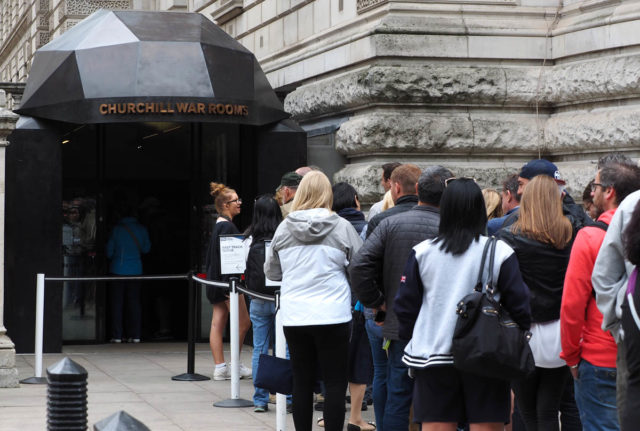
Photo Credit
Standing inside the main cabinet room trying to feel a sense of those meetings on days when things looked both bleak like Dunkirk and also on when winning was the more likely outcome. Monumental decisions were made in this room and standing there trying to soak-in the history of the place was an indeed a most memorable experience.
Giant red painted steel beams certainly give the impression that the underground complex is bomb proof but in reality was in fact bomb resistant! Something that Mr. Churchill, found out later.
Pencils and notepads in neat rows along with a scattering of numerous ashtrays with hole punches (Churchill insisted that papers were punched and tagged rather than stapled) lying on the black cloth covering the U-shaped table.
Tiny wall mounted fans would have hardly moved the fug of dense smoke that would have pervaded the small sealed room as nearly everyone at that time smoked including of course Winston Churchill.
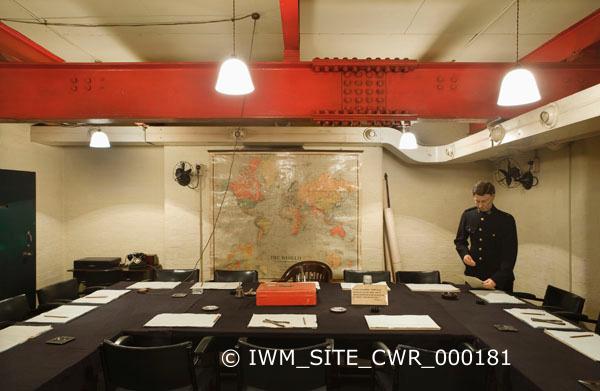
It would have been better and probably more healthy for those senior officers and Mr. Churchill if they had used the special ventilation system installed for a German gas attack during those often four and five hour long meetings.
The wooden arm chair with a central padded seat used by the great man still has marks on the arms where his rings and at times his fingernails scratched away during those meetings.
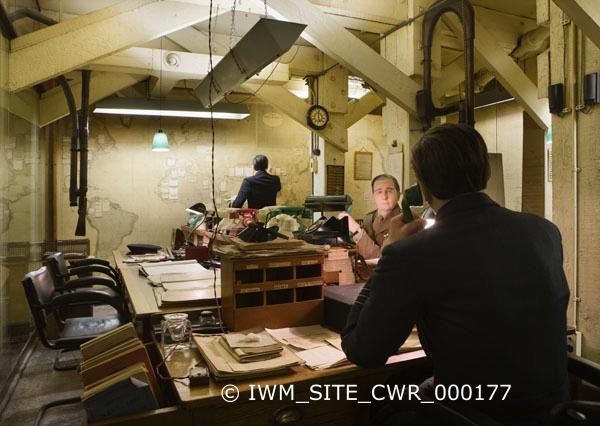
Lacking facilities such as plumbing and being underground and sealed in during air raids this was again not the healthiest of places to be but for five years meetings were held there. Although when it came to sleeping in the single bed specially installed in the bedroom office Churchill did only spend the whole night there on just three occasions.
Padding around on the beige carpeted floor in his bedroom was again something that is not open to the public and knowing that his chamber pot was to hand just under the bed did tell its own story. He may have been important enough to have a fully carpeted room but he was like the rest of the staff he either used that or probably a chemical toilet!
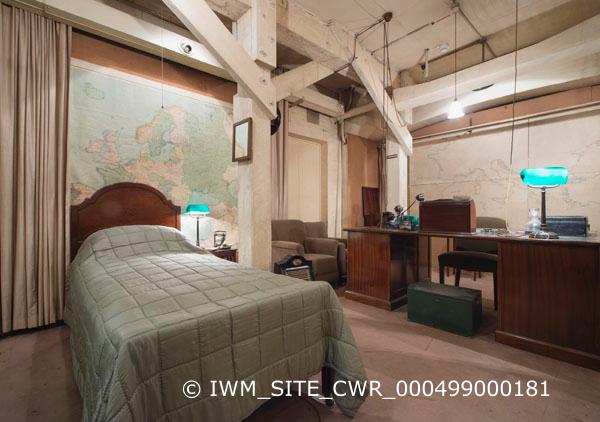
There are several items that are just visible to most visitors viewing from outside on the far side of the bed is a huge ashtray basically a metal box about a foot square and marked ashtray too!
Still today one of Churchill’s very own cigars is laying on a green candle night-light on his bedside table.
Hating the clack, clack of typewriters Mr. Churchill had near silent ones brought over from the US. Therefore in the main command room almost adjacent to his bedroom, the shelf of various coloured telephones had switches that could be activated to flashlights rather than ring when he was working or resting nearby.
What stories could those telephones tell? Messages coming in from all three services like the HMS Hood being sunk, Singapore falling and of course the successes like the Battle of Britain and the Japanese being pushed back across Burma. Today still on the wall there is a map with string and pins showing that front line being push over much of the territory.
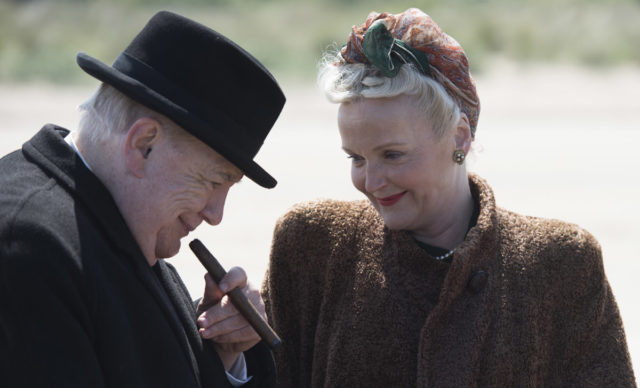
Stills credit: © Graeme Hunter Pictures.
Maps were almost an obsession with Churchill and their security was crucial, no Google maps in those days. Planning battlefronts or tracking convoys most walls were covered in them. Pin marked maps adorned nearly every vertical surface especially that of the North Atlantic. Where every convoy would have been meticulously plotted inch by inch by the Royal Navy.
Last year the war rooms attracted over 480,000 visitors with the release of this Churchill film starring Brian Cox and Miranda Richardson it’s sure to push the number over the 500,000 total.
My experience was unique and there is no way that around half a million visitors could possibly tour in such a way. We were under very strict instructions to touch nothing, the artifacts are rare and much fragile.
Millions of passing fingers touching and prodding is not a recipe for keeping what are in effect national treasures. However, the museum as a whole is well worth visiting and full of items and interactive presentations that tell a story of a great man and the team that tamed tyranny in the world.
